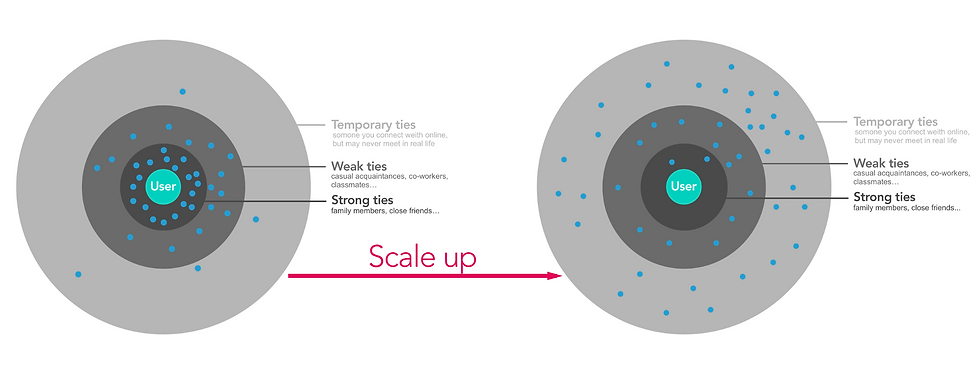Why Social Media Can't Live Up to Its Own Hype
- netaround
- Jun 1, 2016
- 2 min read

Social media promised to expand our range of real-world relationships and experiences. Has it fulfilled that aim?
Social media was conceived on the promise of connection -- facilitating the seamless expansion of our personal and professional networks, building new relationships while strengthening our existing ones. This conceit, as demonstrated by the proliferation of social media platforms today, has clearly taken off.
Yet, the way we use social networks is becoming increasingly detached from real world experiences; we constantly monitor and expand our online social groups, but rarely do those connections materialize into tangible, human relationships. The truth is, despite commanding our absolute attention, social media is not living up to its original promise.
How Social Has Evolved
The social media industry has been split into two distinct camps, neither of which effectively accommodates the demands of modern social media users:
The one-size-fits-all Facebooks of the world, which try, and ultimately fail, to service each and every need on a global scale.
The one-size-too-small Instagrams, Snapchats, and Twitters, which offer a narrow set of features, and are of little use for cultivating real-world relationships.
Many social media platforms, initially, were small, highly localized, and based on mutual acquaintances, which meant that any connection made online could easily be cemented with an in-person meeting.
Facebook, for example (then known as “the facebook”), began as a networking site for on-campus students at Harvard, as the Guardian notes. People were quick to identify its social usefulness, and Facebook spread like wildfire to other universities, the American public, and soon, across the world.
Ironically, this enormous popularity has degraded the network’s original purpose. As soon as Facebook and other social sites began to scale up, they lost the practicality of connecting people within an immediate physical radius. To accommodate a massive (and massively diverse) audience, the largest sites now boast a huge variety of features and functions. Unfortunately, they’re now too unwieldy to fulfill their original aim: to simply help users meet new people.

On the other side of the coin, some platforms have aggressively tried to fill the hyper-local niche. Instagram, for instance, provides a wonderful means of sharing pictures with your existing connections. Its approach to fostering new relationships, however, is extremely limited in terms of functionality.
Netaround Harnesses the Original Promise of Social Media
How can social media platforms fulfill their initial promise: helping us to expand and enhance our real-world networking experiences with the ease of digital communication?
Netaround, a social platform for real life experiences, aims to do just that. Netaround allows users to connect within a specified physical radius or “zone,” -- an office space, concert venue, networking event, or housewarming party could each serve as an opportunity to forge meaningful real world connections with like-minded people, quickly transitioning from on-screen introductions to real-life meetings.

In the ever-expanding landscape of social media platforms, attention must be refocused on avoiding digital alienation and connecting users to lived experience. Facebook is too big, Instagram is too small -- but Netaround is just right.
Sign up for our Priority Boarding list and we’ll let you know when Netaround is ready for takeoff.
(Image credit: Ryan Wong/Unsplash)
































Comments